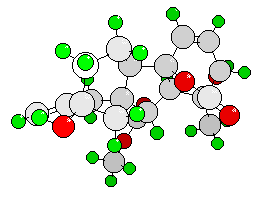
Hormones are messengers. They are produced and secreted by cells in order to control the activity of other cells at distant parts of the organism. Research into hormones was at first intensely occupied with animal hormones. Their importance in the regulation of the metabolism, for the integration of the most different functions within the organism, and for the control of growth was soon recognized. The activities of the hormone system are themselves controlled by the central nervous system that coordinates all functions within the organism.
The quick progress and the application in medicinal research led to several definitions and concepts that helped outlining the term hormone.
According to the classical interpretation are hormones substances that are produced by certain tissues called glands. They reach the tissue or cells they affect, where they are recognized, and where they cause a specific reaction via the blood stream. They are therefore also called effectors. Hormone induced reactions belong into two different categories:
Reversible metabolic reactions. The cellular metabolism is adjusted to the prevailing need of the organism. Insulin, for example, adjusts (lowers) the level of blood sugar to a given required value.
Irreversible regulation of growth and differentiation processes. Insufficient amounts of growth hormone, for example, lead to dwarfism. Another example is the hormone hematopoietin that induces the terminal steps of the erythrocytes’ differentiation.
Hormones belong to different groups of substances, the most important of which are the peptide hormones and the steroid hormones. The specific effects on the cells of the target organ is exclusively based on the fact that only these cells are equipped with the necessary hormone receptors. Hormone receptors are usually proteins that change their conformation and activity according to their binding state. They elicit a signal within the cell that controls the cell’s metabolism. Thus only the receptor-containing cells are signal receivers.
Often are hormone receptors exposed at the cell’s surface. Accordingly does the bound effector not enter the cell, but its binding by the receptor stimulates the synthesis of an intracellular second messenger like cyclic AMP (cAMP), for example, that increases or reduces the metabolic activities. A decisive advantage of this concept is its intrinsic amplification, the generation of a cascade. Presumably all peptide hormones work in this way. In contrast go several steroid hormones like oestrogen into the cell where they are recognized by an intracellular receptor and transported into the nucleus. There they selectively control the expression of a group of genes.
The more intense hormones were studies the more different types were recognized, and the more was the original concept of the separation between place of synthesis and target organ questioned. It is still valid for a quite a number of rather well-known hormones, but by far not for all. Neurohormones, for example, are both produced by neurones and effect neurones. Chalones are effectors that inhibit cell division. They are produced by cells of the epithelium and control the rate of cell division of cells of the same type.
© Peter v. Sengbusch - b-online@botanik.uni-hamburg.de